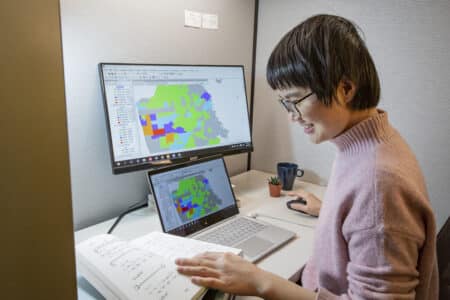Johns Hopkins Engineering graduate student Michael Tomlinson and undergraduate Joe Li have tapped into the promise of natural language prompts and ChatGPT4. Their pioneering approach creates a neuromorphic spiking neural network chip for machine learning and AI. Tomlinson believes this is the first AI chip that is designed by a machine using natural language processing.
They started by providing natural language prompts to ChatGPT4. Their instructions created the spiking behaviour of a single biological neuron. They then linked more to form a network. Their chip design used a larger network chip that abstracts the functionality of neurons in the human brain.
“The process can be likened to giving instructions to a computer, such as ‘Create an AI neural network chip,’ and the computer generates a file containing the specifications and design for manufacturing that chip,” says Tomlinson, who worked closely on the project with Li and with Andreas Andreou, a professor of electrical and computer engineering who is also co-founder of the Center for Language and Speech Processing and is affiliated with the Kavli Neuroscience Discovery Institute and Johns Hopkins UniversityU’s new Data Science and AI Institute. The team’s design appears on the preprint site arXiv.

Professor Andreas Andreou. Source: JHU
Tomlinson explains that their design was simple as a proof of concept. The chip’s final network architecture is a small silicon “brain” with two layers of interconnected neurons. It has a flexible programming system, featuring an 8-bit addressable weight system to programme the chip and fine-tune the chip’s behavior. This customisation is facilitated through a user-friendly interface, akin to a remote control.
Before manufacturing, the team validated the chip design extensively through software simulations to ensure functionality and address any issues. Then they submitted the design electronically to the Sky water “foundry,” a chip fabrication service in Minnesota, where it is currently being “printed” using a relatively low-cost process.
“While a small step, this shows AI can create advanced hardware to accelerate the development of technology,” says Tomlinson, noting that neural network chips could soon power energy-efficient, real-time machine intelligence for next-generation embodied systems like autonomous vehicles and robots.
Tomlinson’s research interests are in building systems to solve the computational problems posed by today’s cutting-edge algorithms, particularly for AI. “These algorithms are getting more expensive to compute,” he says. “I would like to rethink how we architect our computing systems to more efficiently implement these algorithms and solve problems that people care about.”













